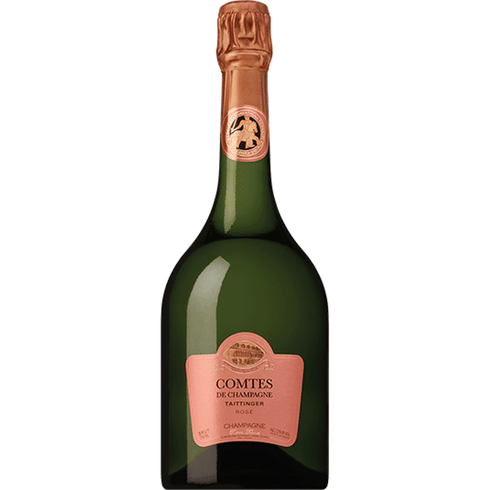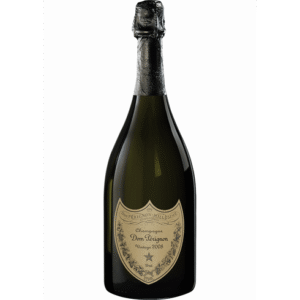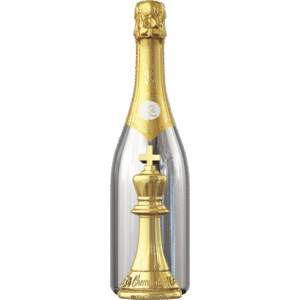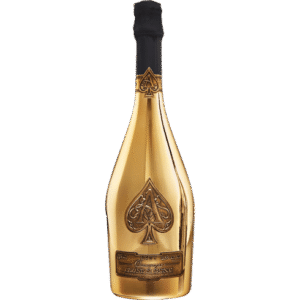Taittinger Comtes Rose Brut, 2007
$260 Original price was: $260.$200Current price is: $200.
Taittinger Champagne
Celebrate with the refined elegance of Taittinger Champagne. This iconic French sparkling wine offers crisp notes of green apple, citrus, and brioche, with a delicate, creamy mousse. At 12% ABV, its vibrant finish is perfect for toasting special moments or pairing with fine cuisine.
Taittinger Champagne: Your Guide to the Elegant Family House
If you’re beginning to explore the world of Champagne beyond the familiar big names, you’ve likely encountered the elegant bottles of Taittinger Champagne. This family-owned house represents a different approach to Champagne-making—one that emphasizes finesse, elegance, and a distinctive style that has captivated wine lovers for generations. This comprehensive guide will walk you through everything you need to know about Taittinger Champagne, from its unique production methods to its range of expressions and why it might become your new favorite celebration wine.
What is Taittinger Champagne?
Let’s start with the basics. Taittinger Champagne is one of the few remaining family-owned major Champagne houses, founded in 1932 by Pierre Taittinger. What sets Taittinger apart in the crowded Champagne market is their distinctive approach to wine-making, particularly their emphasis on Chardonnay in the blend—unusual for a house that produces Champagne at this scale.
The Champagne Taittinger style is known for its elegance, finesse, and relatively high percentage of Chardonnay across their range. This grape variety, typically associated with the Blanc de Blancs style, gives Taittinger Champagne its characteristic freshness, minerality, and aging potential. While many Champagne houses emphasize Pinot Noir for power and body, Taittinger champions the elegance of Chardonnay.
The Taittinger Family Legacy
The story of Taittinger Champagne is one of family commitment and vision. Founded in the challenging economic climate between two world wars, the house has remained under family control through multiple generations. This continuity has allowed them to maintain a consistent house style and long-term vision for their vineyards and wines.
The family’s commitment extends to their vineyard holdings—they own 288 hectares of vineyards, including significant parcels in the prestigious Côte des Blancs, known for producing the finest Chardonnay in Champagne. This level of estate control is unusual among major houses and ensures quality from grape to glass.

The Taittinger Style: Understanding Their Champagne Philosophy
To appreciate Taittinger Champagne, it helps to understand their distinctive house style:
Chardonnay Emphasis
While most Champagne houses use Pinot Noir as their dominant grape, Taittinger typically uses:
-
Higher Chardonnay percentages across their range
-
Côte des Blancs fruit for its finesse and minerality
-
Extended aging on lees for complexity
-
Lighter dosage to maintain freshness
The Resulting Character
This approach creates Champagnes known for:
-
Elegance over power
-
Finesse rather than intensity
-
Age-worthiness and development potential
-
Food-friendly versatility
The Taittinger Range: Understanding Their Expressions
Taittinger Champagne offers several expressions, each with its own character and purpose:
Taittinger Brut Réserve
The entry-level expression and house flagship:
-
Blend: 40% Chardonnay, 35% Pinot Noir, 25% Pinot Meunier
-
Aging: 3-4 years on lees
-
Style: Fresh, fruity, approachable
-
Occasion: Perfect for everyday celebrations
When people search for Taittinger Champagne Brut, this is typically the expression they’re seeking—the classic introduction to the house style.
Taittinger Prestige Rosé
Their non-vintage rosé offering:
-
Blend: Pinot Noir dominant with Chardonnay
-
Color: From adding still red wine (15-20%)
-
Style: Fruity, elegant, with red berry notes
-
Pairing: Excellent with seafood and Asian cuisine
Taittinger Nocturne
A sweeter style for specific occasions:
-
Dosage: Higher dosage (17.5 g/l vs 9 g/l in Brut)
-
Style: Richer, sweeter, but balanced
-
Occasion: Perfect with desserts or as an aperitif
Taittinger Vintage Expressions
Taittinger produces vintage Champagnes in exceptional years:
-
Aging: Longer lees aging (5-10 years)
-
Character: More complexity and development
-
Collectibility: Ages well in cellar
Taittinger Comtes de Champagne
The legendary prestige cuvée:
-
White: 100% Chardonnay from Côte des Blancs
-
Rosé: 100% Pinot Noir from Montagne de Reims
-
Aging: Minimum 10 years on lees
-
Status: Among Champagne’s most collectible wines
When enthusiasts search for Taittinger Comtes de Champagne, they’re looking for one of the world’s great luxury Champagnes.
Tasting Notes: The Flavor Profile of Taittinger Champagne
Understanding what to expect when you open a bottle helps appreciate why Taittinger Champagne has its devoted followers:
Taittinger Brut Réserve Tasting Notes
Appearance and Bubbles:
-
Color: Pale gold with green reflections
-
Bubbles: Fine, persistent bead
-
Mousse: Creamy, elegant texture
Aroma (The “Nose”):
-
Fresh Fruits: White peach, citrus, apple
-
Floral Notes: White flowers, acacia
-
Yeasty Complexity: Fresh bread, brioche
-
Mineral Undertones: Chalk, flint
Flavor (The “Palate”):
-
Initial: Bright citrus and stone fruit
-
Mid-palate: Creamy texture with developing complexity
-
Finish: Clean, mineral-driven, balanced acidity
Comtes de Champagne Tasting Profile
The Taittinger Comtes de Champagne offers a more profound experience:
-
Complexity: Layered aromas of honey, toast, and dried fruit
-
Texture: Incredibly creamy yet precise
-
Length: Minutes-long finish that evolves
-
Development: Changes beautifully in the glass
Tasting Tip: To fully appreciate Taittinger Champagne, serve it between 8-10°C (46-50°F) in a proper Champagne flute or tulip glass. Pour gently to preserve the bubbles and taste it both upon opening and after 10-15 minutes to see how it opens up. The higher Chardonnay content means Taittinger often shows best when not over-chilled.
Taittinger Champagne Price and Value Analysis
Understanding the pricing helps determine where Taittinger Champagne fits in your budget and celebration plans:
Price Ranges (750ml)
Non-Vintage Range:
-
Taittinger Brut Réserve: $45-65
-
Taittinger Prestige Rosé: $55-75
-
Taittinger Nocturne: $50-70
Vintage Expressions:
-
Taittinger Vintage Brut: $65-90
-
Taittinger Vintage Rosé: $75-100
Prestige Cuvées:
-
Taittinger Comtes de Champagne Blanc: $150-250+
-
Taittinger Comtes de Champagne Rosé: $200-300+
Understanding the Taittinger Champagne Cost
Several factors influence Taittinger Champagne price:
Production Quality:
-
High percentage of estate-owned grapes
-
Extended lees aging across the range
-
Significant Chardonnay content (more expensive grape)
Market Position:
-
Family-owned premium positioning
-
Strong critical reception and scores
-
Collectible status of prestige cuvées
Value Assessment:
At its typical Taittinger Champagne price points, the house offers:
-
Excellent quality for non-vintage categories
-
Distinctive style different from competitors
-
Strong aging potential even for entry-level wines
-
Prestige recognition without ultra-luxury pricing
How to Serve and Enjoy Taittinger Champagne
This elegant Champagne works beautifully in various settings:
Proper Serving Technique
Temperature Matters:
-
Over-chilling masks flavors and aromas
-
Ideal temperature: 8-10°C (46-50°F)
-
Chilling time: 2-3 hours in refrigerator
Glassware Selection:
-
Flute: Traditional, preserves bubbles
-
Tulip: Better for aroma development
-
White wine glass: Increasingly popular for prestige cuvées
Food Pairings
Taittinger Brut Réserve:
-
Oysters and seafood
-
Light appetizers
-
Sushi and Asian cuisine
Taittinger Prestige Rosé:
-
Grilled fish
-
Asian dishes with spice
-
Charcuterie and soft cheeses
Comtes de Champagne:
-
Lobster and rich seafood
-
Roasted poultry
-
Truffle dishes
The Art of Champagne Making: Taittinger’s Approach
Understanding the production process helps appreciate why Taittinger Champagne stands out:
Vineyard Management
Taittinger’s significant estate holdings allow for:
-
Control over grape quality
-
Sustainable vineyard practices
-
Optimal harvest timing
Winemaking Philosophy
Their approach emphasizes:
-
Gentle pressing for quality juice
-
Minimal intervention in winemaking
-
Extended lees contact for complexity
-
Judicious dosage to balance rather than sweeten
When to Choose Taittinger Champagne
Several scenarios make Taittinger the perfect choice:
For Special Occasions
-
Anniversaries and celebrations
-
Milestone achievements
-
Holiday gatherings
For Wine Enthusiasts
-
Exploring different Champagne styles
-
Understanding Chardonnay’s role in Champagne
-
Aging potential experiments
For Gift Giving
-
Impressive but not overly common
-
Beautiful packaging and recognition
-
Suitable for various taste preferences
Finding and Purchasing Taittinger Champagne
As a widely distributed premium Champagne, finding Taittinger is relatively straightforward:
Retail Options
Wine Specialty Stores:
-
Best selection and knowledgeable staff
-
Possible to find older vintages
-
Often can special order specific expressions
Online Retailers:
-
Convenient price comparison
-
Wider selection potential
-
Direct shipping options
Auction Houses:
-
For older vintages of Comtes de Champagne
-
Collectible bottles and large formats
Smart Buying Tips
-
Check recent reviews for current releases
-
Consider storage conditions when buying
-
Compare prices across retailers
-
Buy from reputable sources to ensure provenance
For the most accurate information about current releases and production details, the official Union of Champagne Houses provides excellent resources about Champagne production and reputable houses.
Taittinger Champagne Review: The Final Verdict
After exploring all aspects of this esteemed Champagne house, here’s the essential assessment:
The Bottom Line: Taittinger Champagne offers a distinctive, elegant alternative to the more powerful styles of many major Champagne houses. Their emphasis on Chardonnay creates Champagnes of finesse, complexity, and aging potential that stand apart in a crowded market.
Who Should Choose Taittinger:
-
Those who prefer elegance over power in Champagne
-
Chardonnay lovers exploring sparkling expressions
-
Consumers seeking family-owned quality
-
Anyone wanting impressive but not ostentatious Champagne
Might Disappoint Those Seeking:
-
Powerful, Pinot Noir-dominated styles
-
Heavily oxidative or aged Champagne profiles
-
Budget-priced everyday options
-
Immediate gratification (many benefit from aging)
Taittinger Champagne succeeds by staying true to their vision of elegance and finesse. In a world of increasingly similar Champagnes, they offer a distinctive voice that’s worth hearing—or rather, tasting.
Frequently Asked Questions (FAQ)
1. What makes Taittinger Champagne different from other major houses?
The key difference is Taittinger’s emphasis on Chardonnay in their blends. While most major houses use Pinot Noir as their dominant grape, Taittinger typically features higher percentages of Chardonnay, creating Champagnes with more finesse, minerality, and elegance rather than power and weight.
2. How long can I age Taittinger Champagne?
Taittinger Champagnes have excellent aging potential. The Brut Réserve can improve for 3-5 years, vintage expressions for 10-15 years, and Taittinger Comtes de Champagne can develop beautifully for 20+ years in proper storage conditions. The high Chardonnay content gives them great aging structure.
3. Is Taittinger good value compared to other Champagne houses?
Generally, yes. The Taittinger Champagne cost typically represents good value, particularly at the non-vintage level where the quality often exceeds the price point. Their estate-owned vineyards and consistent quality make them a reliable choice across price categories.
4. What’s the difference between Taittinger Brut and Comtes de Champagne?
The Brut Réserve is their non-vintage entry-level wine, while Taittinger Comtes de Champagne is their prestige cuvée made only in exceptional years from 100% Grand Cru vineyards. The Comtes represents the pinnacle of their winemaking with extended aging and incredible complexity.
5. Should I drink Taittinger Champagne immediately or can I cellar it?
While all Taittinger Champagnes are enjoyable upon release, even the non-vintage Brut Réserve can benefit from 1-3 years of cellaring. The vintage expressions and especially Comtes de Champagne are designed for long-term aging and will develop additional complexity with proper storage.
Be the first to review “Taittinger Comtes Rose Brut, 2007” Cancel reply
Related products
Champagne
Champagne
Champagne
Champagne
Champagne
Champagne










Reviews
There are no reviews yet.